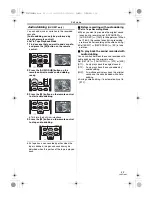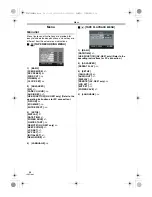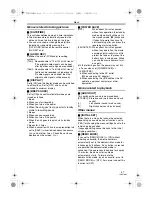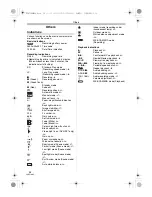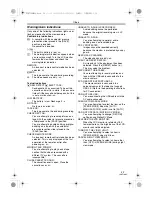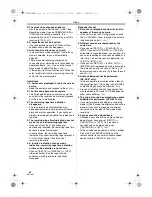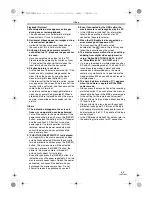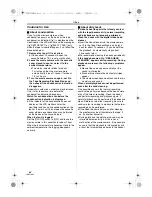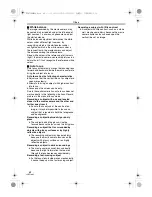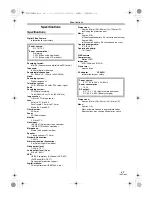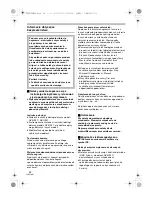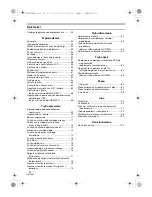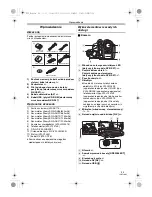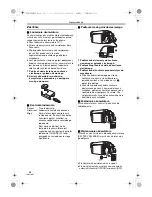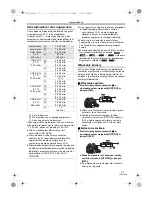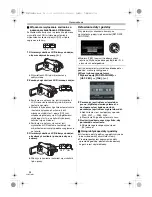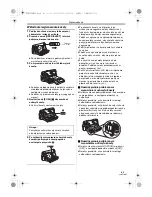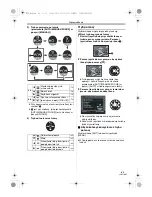
Others
48
LSQT1005
ª
White balance
The image recorded by the movie camera may
become bluish or reddish under the influence of
light sources. To avoid such phenomena, adjust
the white balance.
White balance adjustment determines the white
colour under different light sources. By
recognizing which is the white colour under
sunlight and which is the white colour under a
fluorescent lamp, the movie camera can adjust
the balance among the other colours.
Since white colour is the reference of all colours
(light), the movie camera can record pictures in a
natural hue if it can recognize the reference white
colour.
ª
Auto focus
Auto focus automatically moves the focusing lens
forward and backward inside the movie camera to
bring the subject into focus.
Auto focus has the following characteristics.
≥
Adjusts so that the vertical lines of a subject are
seen more clearly.
≥
Attempts to bring an object with higher contrast
into focus.
≥
Focuses on the screen centre only.
Due to these characteristics, auto focus does not
work correctly in the following situations. Record
pictures in the manual focus mode.
Recording a subject with one end located
closer to the movie camera and the other end
farther away from it
≥
As auto focus adjusts at the centre of an
image, it may be impossible to focus on a
subject that is located in both the foreground
and background.
Recording a subject behind dirty or dusty
glass
≥
The subject behind the glass will not be
focused because the focus is on the dirty glass.
Recording a subject that is surrounded by
objects with glossy surfaces or by highly
reflective objects
≥
The recording subject may become blurry
because the movie camera focuses on the
objects with glossy surfaces or on highly
reflective objects.
Recording a subject in dark surroundings
≥
The movie camera cannot focus correctly
because the light information that comes
through the lens decreases considerably.
Recording a fast-moving subject
≥
As the focus lens-inside moves mechanically,
it cannot keep up with a fast-moving subject.
Recording a subject with little contrast
≥
A subject with little contrast, such as a white
wall, may become blurry because the movie
camera achieves focus based upon the
vertical lines of an image.
LSQT1005ENG.book 48 ページ 2005年12月16日 金曜日 午後3時11分


